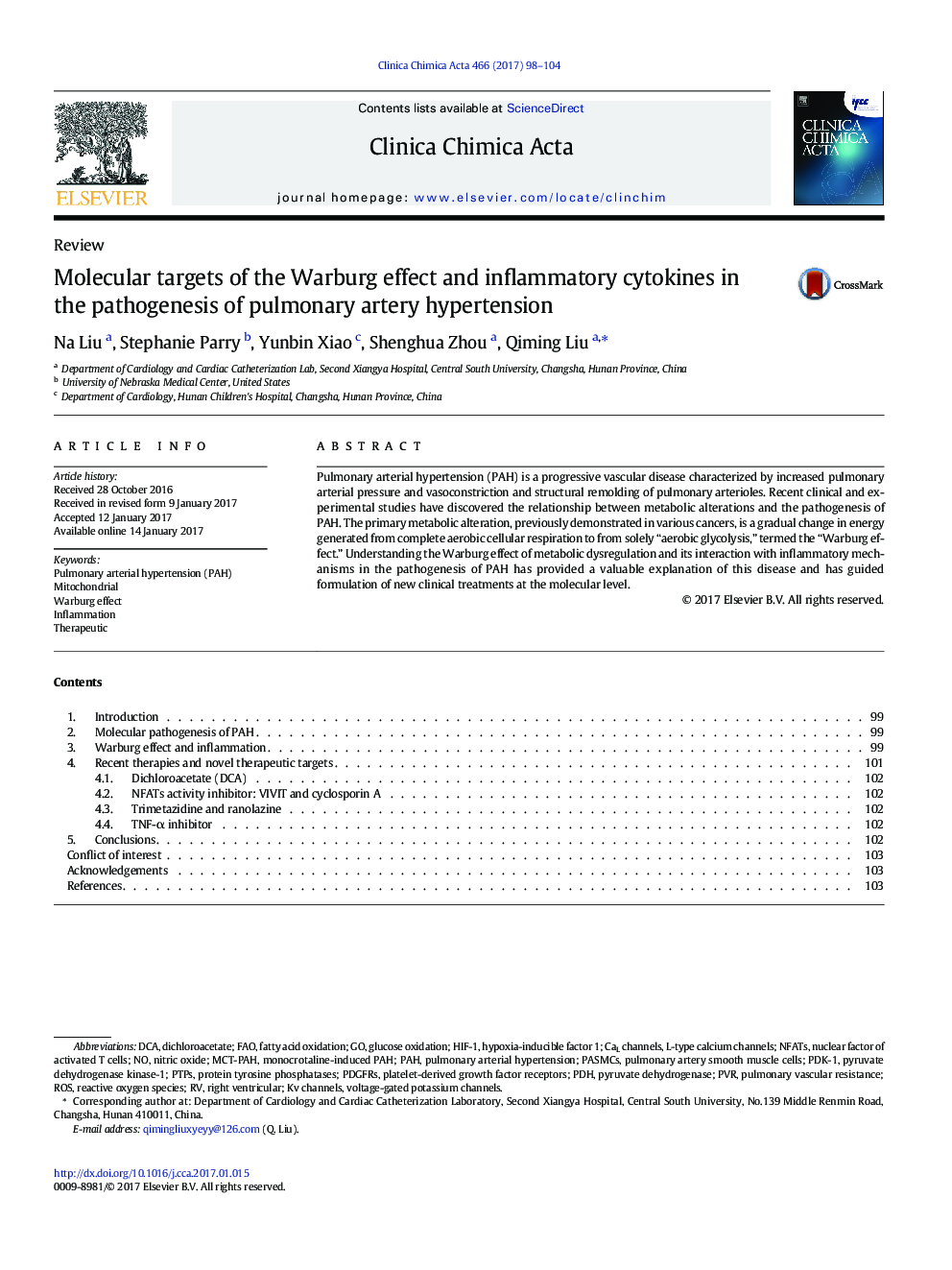| Article ID | Journal | Published Year | Pages | File Type |
|---|---|---|---|---|
| 5509731 | Clinica Chimica Acta | 2017 | 7 Pages |
Abstract
Pulmonary arterial hypertension (PAH) is a progressive vascular disease characterized by increased pulmonary arterial pressure and vasoconstriction and structural remolding of pulmonary arterioles. Recent clinical and experimental studies have discovered the relationship between metabolic alterations and the pathogenesis of PAH. The primary metabolic alteration, previously demonstrated in various cancers, is a gradual change in energy generated from complete aerobic cellular respiration to from solely “aerobic glycolysis,” termed the “Warburg effect.” Understanding the Warburg effect of metabolic dysregulation and its interaction with inflammatory mechanisms in the pathogenesis of PAH has provided a valuable explanation of this disease and has guided formulation of new clinical treatments at the molecular level.
Keywords
HIF-1DCAPDHPDK-1PAHPASMCsPTPsROSWarburg effectinflammationFatty acid oxidationGlucose oxidationRight ventricularTherapeuticDichloroacetatepulmonary artery smooth muscle cellsPVRhypoxia-inducible factor 1Nuclear Factor of Activated T CellsFAOPulmonary arterial hypertensionPulmonary arterial hypertension (PAH)Pulmonary vascular resistanceMitochondrialNitric oxideprotein tyrosine phosphatasespyruvate dehydrogenaseKv channelsVoltage-gated potassium channelsL-type calcium channelsReactive oxygen speciesplatelet-derived growth factor receptors
Related Topics
Life Sciences
Biochemistry, Genetics and Molecular Biology
Biochemistry
Authors
Na Liu, Stephanie Parry, Yunbin Xiao, Shenghua Zhou, Qiming Liu,
